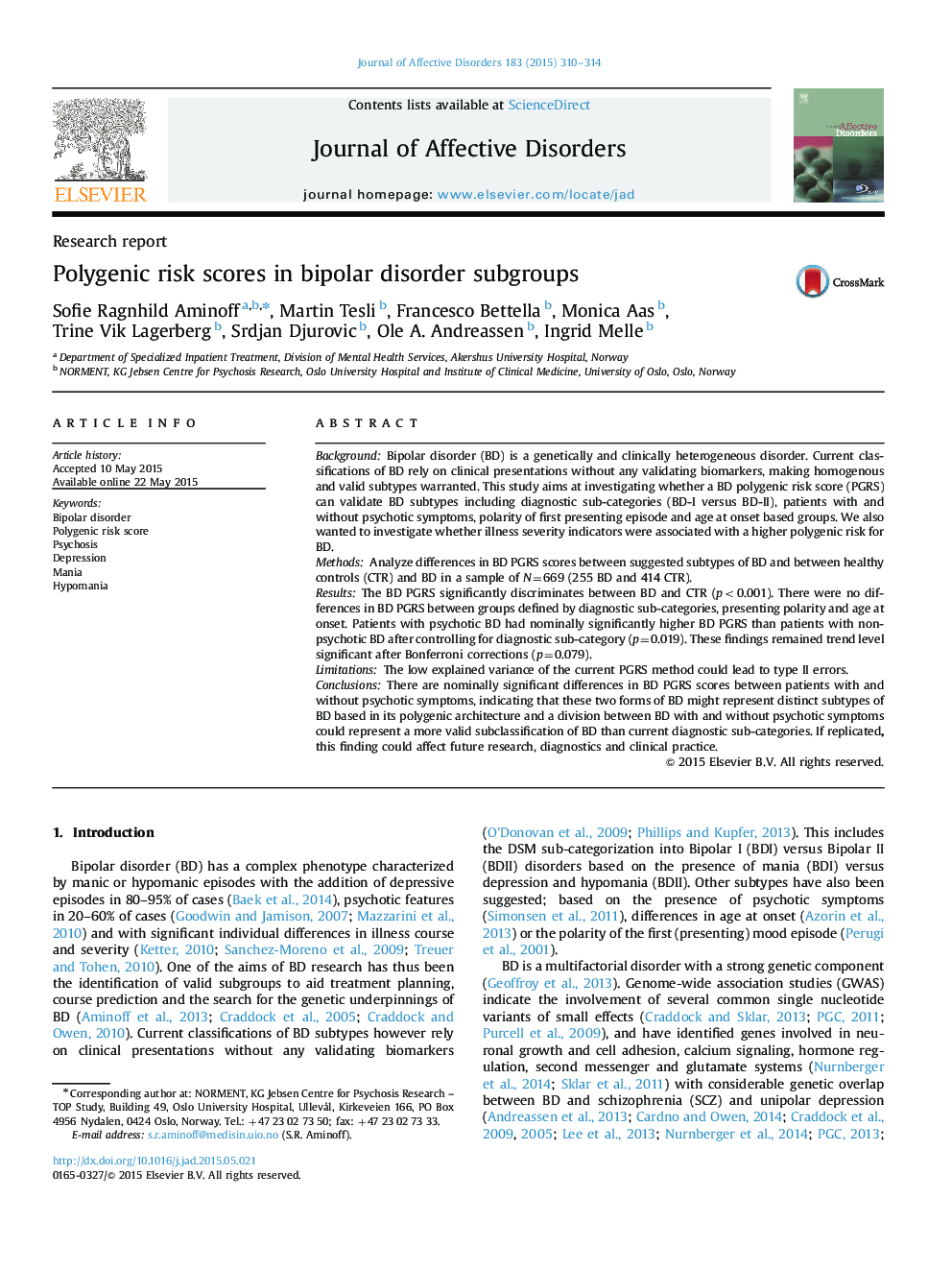| Article ID | Journal | Published Year | Pages | File Type |
|---|---|---|---|---|
| 6231498 | Journal of Affective Disorders | 2015 | 5 Pages |
â¢Using a bipolar disorder (BD) polygenic risk score (PGRS) to validate BD subtypes.â¢Subtypes are BDI/ BDII, psychotic BD, polarity of first episode and age at onset.â¢Only patients with psychotic symptoms had higher PGRS than those without.â¢This categorization could represent a genetically valid subclassification of BD.â¢If replicated this may affect future research, diagnostics and clinical practice.
BackgroundBipolar disorder (BD) is a genetically and clinically heterogeneous disorder. Current classifications of BD rely on clinical presentations without any validating biomarkers, making homogenous and valid subtypes warranted. This study aims at investigating whether a BD polygenic risk score (PGRS) can validate BD subtypes including diagnostic sub-categories (BD-I versus BD-II), patients with and without psychotic symptoms, polarity of first presenting episode and age at onset based groups. We also wanted to investigate whether illness severity indicators were associated with a higher polygenic risk for BD.MethodsAnalyze differences in BD PGRS scores between suggested subtypes of BD and between healthy controls (CTR) and BD in a sample of N=669 (255 BD and 414 CTR).ResultsThe BD PGRS significantly discriminates between BD and CTR (p<0.001). There were no differences in BD PGRS between groups defined by diagnostic sub-categories, presenting polarity and age at onset. Patients with psychotic BD had nominally significantly higher BD PGRS than patients with non-psychotic BD after controlling for diagnostic sub-category (p=0.019). These findings remained trend level significant after Bonferroni corrections (p=0.079).LimitationsThe low explained variance of the current PGRS method could lead to type II errors.ConclusionsThere are nominally significant differences in BD PGRS scores between patients with and without psychotic symptoms, indicating that these two forms of BD might represent distinct subtypes of BD based in its polygenic architecture and a division between BD with and without psychotic symptoms could represent a more valid subclassification of BD than current diagnostic sub-categories. If replicated, this finding could affect future research, diagnostics and clinical practice.
